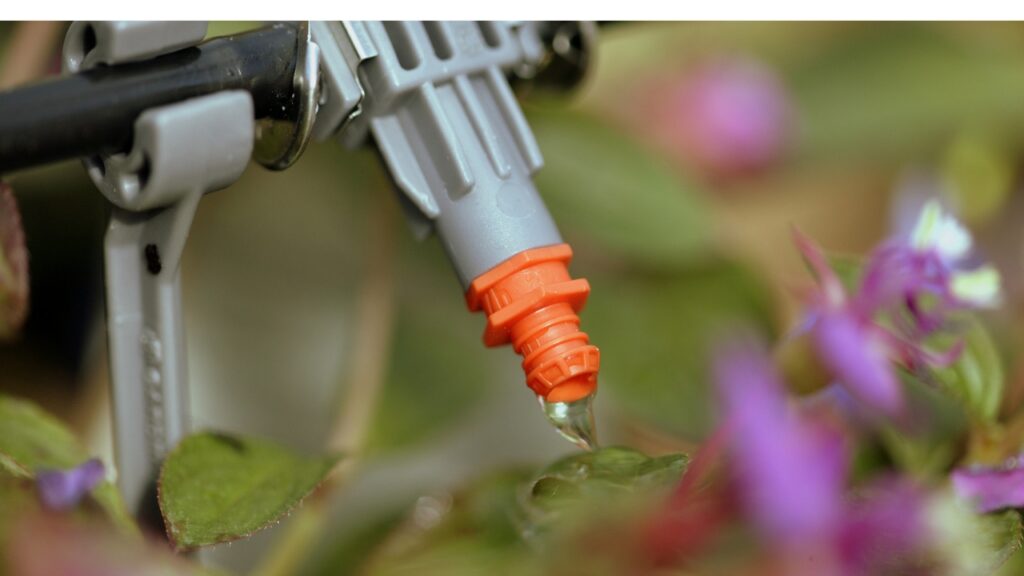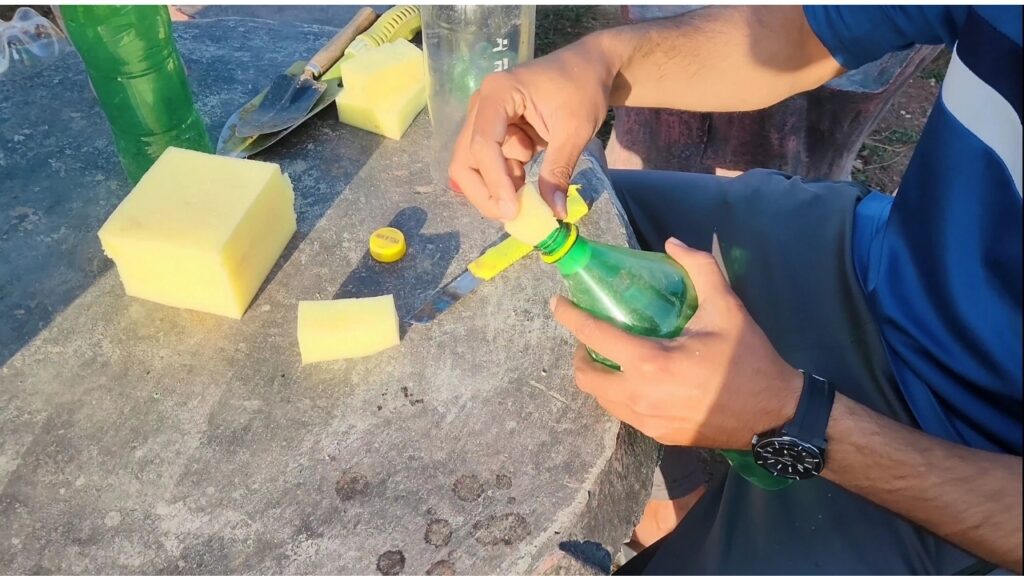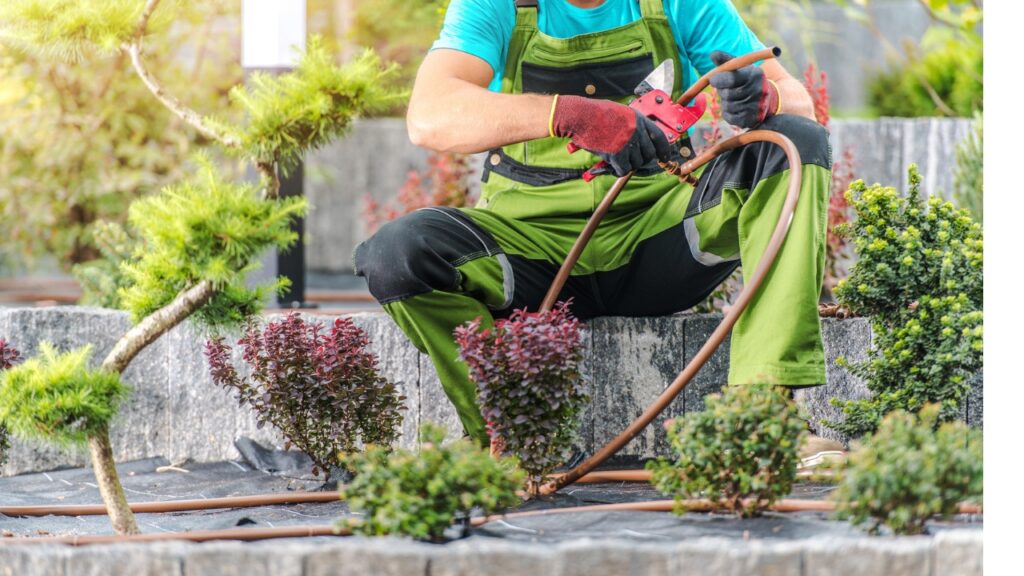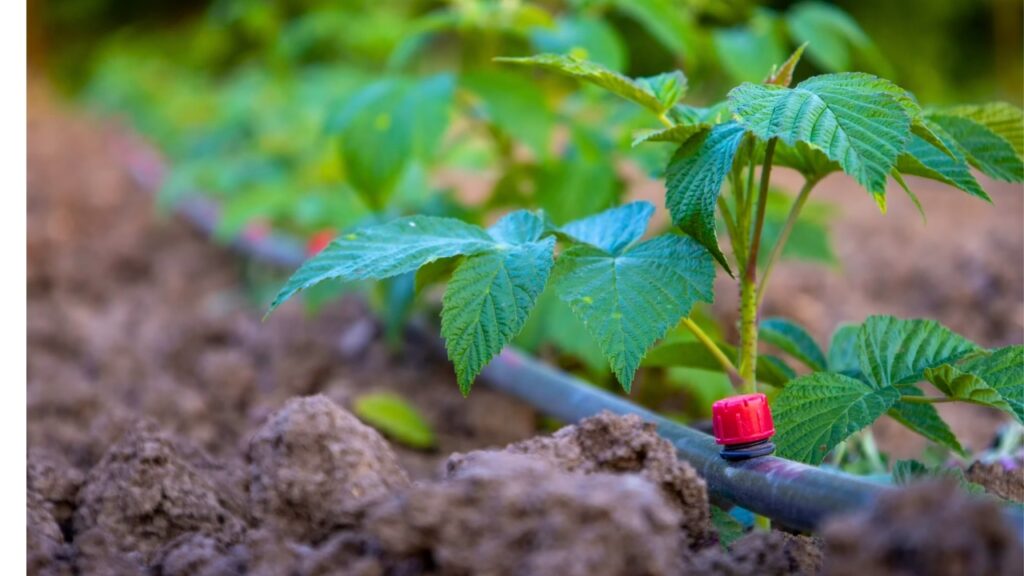Drip Irrigation is basically a revolution in your garden to get healthy plants and a sustainable future. In this article we will walk through creating a simple and effective drip irrigation system using accessible materials. If you want to provide consistent moisture to your plants, drip irrigation is perfect for you,especially those that require regular watering like shallow-rooted vegetables and flowers.
How to water effectively?
It is a question that every gardener asks, because regular watering can make it possible to get thriving plants. Traditional methods, like sprinklers, can be wasteful and uneven, leaving some plants thirsty while others drown.
Thankfully, drip irrigation systems offer a wonderful solution. Here we will walk through the numerous benefits of drip irrigation, highlighting its positive impact on both your plants and the environment.
The article is divided into the following sections:
- Benefits of Drip Irrigation
- Unleashing Water Efficiency: A Drop at a Time
- Cultivating a Shelter for Healthy Plants
- A blessing for Busy Gardeners: Convenience and resourceful
- Beyond the Garden: Environmental Benefits
- A feasible Choice for the Future
- Required Materials
- Creating Your Drip Irrigation System
- Advantages of Drip Irrigation
- Techniques of drip irrigation
Benefits of Drip Irrigation
- Targeted Watering: Minimises waste and runoff directly delivers water to the plants.
- Reduced Evaporation: This system minimizes water evaporation because it flows slowly and in a controlled way, so in this way it’s a better option in the areas where hot climates are found.
- Healthy Plants: Irregular watering gives stress to the plants and affects their health but drip irrigation gives consistent moisture to the plants and promotes a healthy environment.
- Versatility: Drip irrigation is a perfect option for plants, including vegetables, flowers, and container gardens.
- Easy Maintenance: Simple design requires minimal upkeep.
Unleashing Water Efficiency: A Drop at a Time

The exceptional water efficiency of drip irrigation is one of the most significant advantages of this method of water watering. Unlike sprinklers that cast water over a vast area, drip irrigation feeds water directly to the root zone of plants. This targeted system will benefit you in many areas:
- Evaporation: The sun’s harsh rays will not reach directly to steal precious moisture from the roots.
- Runoff: Water stops consistently where it’s needed, and reduces the risk of puddling and does not waste away.
- Waste: The practice of watering driveways and sidewalks is no longer considered wasteful. Through the use of drip irrigation, every drop counts.
Researchers have proved that drip irrigation systems can use up to 60% less water compared to traditional methods. This makes them a hero for water conservation, especially in regions facing drought or limited water resources.
Building a Haven for Healthy Plants
Drip irrigation offers numerous benefits for plant health as it delivers water smoothly. This system provides water directly to the roots and ensures optimal moisture level. This process offers several positive effect to the plants:
- Reduced Stress: Consistent hydration gives less stress to the plants and leads them to stronger overall growth.
- Enhanced Nutrient Uptake: Some nutrients dissolve in the water readily and reach immediately to the roots and promote better nutrient uptake for optimal growth.
- Reduced Fungal Diseases: This system reduces water contact with leaves and stems, which leads to a hospitable environment for fungal diseases.
- Improved Root Development: Direct delivery of water promotes deeper root growth, which makes the plants resilient that can stand even in droughts.
Drip irrigation provides your plants exactly what they need, and when they need it, provides a healthier and vibrant garden.
A Blessing for Busy Gardeners: Convenience and Resourceful

Drip irrigation systems are not just good for your plants; they are a blessing for busy gardeners as well. Here’s how they offer benefits:
- Versatility: Drip irrigation system can be easily adjusted to fit in all types of gardens, from balconies to small containers or even sprawling vegetable patches.
- Customization: The flow rate of emitters can be adjusted to meet the specific water requirements of different plant types, ensuring each plant gets the perfect amount.
- Reduced Weed Growth: Since water is delivered directly to the root zone, less water reaches the soil surface, leading to reduced weed growth, saving you time on wedding.
- Labor Savings: Once set up, drip irrigation systems require minimal maintenance, freeing up time for other gardening tasks like pruning or harvesting.
This system offers a convenient and efficient way to water your garden, and allow you to spend more time enjoying the fruits (and vegetables!) of your labor.
Beyond the Garden: Environmental Benefits
This system does not only benefit drip irrigation in fact it also spares advantages beyond water conservation and healthy plants. This system can help into several ways by minimizing water runoff:
- Reduce Soil Erosion: This system provides less runoff which leads to less soil erosion, safe valuable topsoil and prevents sedimentation in waterways. This is very important to keep the ecosystem healthy .
- Conserve Nutrients: Minimal runoff provides less options for nutrients to leach away and soil fertility. All this process leads to a healthier environment for plants and a reduced reliance on chemical inputs.
A Feasible Choice for the Future
Drip irrigation systems offer a great environment to both participants’ plants and the gardener. The water efficiency of this system fosters healthy growth to plants and reduces waste. Drip irrigation offers versatility and convenience that is a valuable tool for gardeners at all levels.
By following drip irrigation, you can grow a healthy garden while promoting sustainability and responsible water use. So, consider this smart technology into your gardening practices and observe a transformative power of this watering system.
Required Materials
- 1-liter plastic bottle
- Scissors or utility knife
- Bamboo stick (length depending on desired bottle height)
- Twist ties
- Ear cleaning stick (optional)
- Compost tea (optional)

Creating Your Drip Irrigation System
- Prepare the Bottle:
- For easy filling, cut off the bottom portion of the plastic bottle.
- Use twist ties to secure the bottle to the bamboo stick and make small holes near the cut edge
- Direct the Drip Rate:
- Make a small hole in the bottle cap. This will be the water outlet.
- (Optional) Insert half of an ear cleaning stick into the cap’s hole to control the drip rate. This will make the delivery of water regulated.
- Set up the System:
- Use twist ties to secure the bottle to the bamboo stick.
- Ensure the bottle is upright and stable.
- Arranging in the Garden:
- Firstly you need to choose the plant you want to water.
- Put the bamboo stick into the ground next to the plant, but be sure that the cap of the bottle is slightly above the soil level.
- This position will allow water to drip directly into the root zone.
- Watering and Feeding (Optional):
- Fill the bottle with water. After a short time, you will see water start dripping slowly from the hole.
- (Optional) Compost tea can be used instead of water to provide nutrients to the plants after they receive moisture.
Watch the video for better understanding:
Advantages of This System
- Simple and Affordable: It can be a very cost effective solution, as all the materials that are required are very simple and affordable.
- Easy to Maintain: The maintenance is very easy as we just need to refill the bottle when it will be empty.
- Customizable: it is very customizable as drip rate can be adjusted using the ear cleaning stick (optional).
- Multipurpose: This system can be used for various plants and even container gardens.
- Sustainable: This system minimizes waste and promotes water conservation.
Techniques of drip irrigation:

Mastering the Art of Drip:
Drip irrigation is a revolutionary method of watering our gardens. The days of wasteful sprinklers and uneven hand-watering have been gone in our era. It is 2 centuries old and now the targeted system delivers water directly to the root zone of plants, which promotes healthy growth and maximizes water efficiency. But to be well organized any system mastering in that process is very important. There are some techniques to master for optimal performance. Here you will dive into essential drip irrigation techniques that will ultimately thrive your garden.
Designing System: Planning for Success

The foundation of success in this system is the well organization. Here are some key points that need to be considered:
- Layout: Firstly take a sketch of your garden, mark the location of your plants and water resources. To simplify watering schedules, group the plants of similar needs.
- Selection: Choose a drip line that suits your layout – pressure compensating for even flow across uneven terrain, or non-compensating for level gardens.
- Emitters: According to the plant water needs select emitters. For shrubs and trees low-flow emitters work well, while higher flow rates are suitable for vegetables which require a heavy amount of water.
- Faucet and Timers: Placed the valves strategically that allow for zone control, and deliver water to specific areas independently. Timers will automate the schedules of watering, and create consistent moisture.
Pro Tip: Bring into service online resources or seek advice from gardening professionals to shape the applicable emitter flow rates and system layout for your peculiar garden.
Installation: Setting for Competence
Once you have decided to arrange this system, it’s time to put it into action! Here are some key techniques which need to be considered for installation:
- Trenching (Optional): If you want to get a more permanent setup, below the soil surface bury the drip line a few inches. This will help to protect the line from accidental disturbance and sun damage.
- Stakes and Supports: Use stakes to secure the dripline or landscape staples can also be used to prevent movement and ensure the distribution of water is gone properly.
- Emitter Placement: Near the base of each plant position the emitters that will help to direct water towards the root zone.
- Connection Points: To join dripline sections use appropriate connectors and to prevent leaks attach emitters securely.
Pro Tip: Avoid sharp corners or bends while burying drip lines, because they may restrict water flow.
Operation and Maintenance:
Regular maintenance corroborate the drip irrigation system functions proficiently:
- Filter Cleaning: To prevent clogging by debris in the water source you should clean filters regularly . Clogged emitters can play havoc to water flow and destroy plants.
- System Checks: For checking leaks or damaged lines periodically inspect the system. If you find any issues, address it promptly to maintain efficient water delivery.
- Seasonal Adjustments: Adjust watering schedules As seasons change, based on plant needs according to the weather. During cooler months plants need less water so reducing water in these days similarly increases frequency during hot or dry periods.
Pro Tip:At the beginning of the driplin use a pressure gauge to monitor water pressure and ensure it meets the system’s specifications.
Advanced Techniques: Optimizing Your System
These techniques can enhance drip irrigation efficiency For experienced gardeners because they can optimize your system:
- Liquid Feeding: To deliver nutrients precisely to the root zone inject liquid fertilizers directly into the drip system,that will maximize their uptake.
- Moisture Sensors: If you want to automate watering based on soil moisture levels, you can install moisture sensors that will also prevent overwatering and underwatering.
- Mulching: To keep the oil moisture, apply mulch around plants. This technique will reduce evaporation and the frequency of watering cycles.
Pro Tip: Research different liquid feeding techniques and consult with gardening professionals before encompassing fertilizers into your drip system.
If you just master these essential techniques, you can transform your drip irrigation system into a powerful tool for a thriving garden. With targeted watering, efficient water use and minimal maintenance, drip irrigation allows you to focus on enjoying the charm and award of your flourishing plants.
Conclusion
This simple DIY drip irrigation system is an exceptional way to ensure your plants are receiving consistent moisture and thrive. You can create a sustainable watering solution for your garden by just putting minimal effort and some cheap affordable materials. But be mindful while making it because the beauty of this system lies in its simplicity and effectiveness, allowing you to focus on enjoying the fruits (or vegetables!) of your labor.

